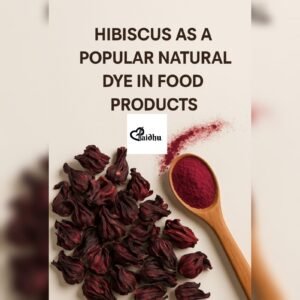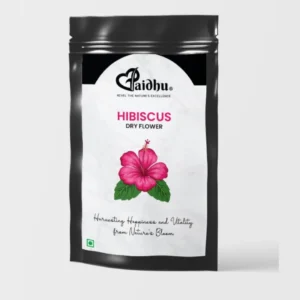In a world steadily moving towards clean labels and plant-powered foods, the humble hibiscus is blossoming far beyond its role in garden hedges or temple offerings. At Paidhu, where flowers meet function, hibiscus is one of our star ingredients—not just for its tart, refreshing flavor but also for its striking natural color.
But what gives hibiscus this rich, ruby red tone? And why are chefs, food scientists, and conscious brands across the globe turning to this flower as a natural food dye?
Let’s steep into the science and story.
The Secret Behind the Scarlet: Anthocyanins
The brilliant deep red color of hibiscus—especially Hibiscus sabdariffa—comes from anthocyanins, a class of plant pigments that also give berries, red cabbage, and black rice their hues. These compounds are pH-sensitive, which means they change color depending on the acidity of their environment:
-
In acidic foods (like lemon juice), hibiscus appears bright red
-
In neutral conditions, it may lean towards purple
-
In alkaline foods, it may fade or turn bluish
This makes it not only beautiful but also dynamic—a living color story on your plate!
How is Hibiscus Used as a Natural Dye?
-
Teas & Infusions: Just a few petals can stain water a vivid red
-
Jams & Jellies: Adds both color and tang in natural fruit preserves
-
Icing & Frosting: Dried hibiscus powder or extracts are used for elegant pink shades
-
Plant-Based Dairy: Creates lovely marbled effects in yogurts, kefirs, and vegan ice creams
-
Cocktails & Mocktails: A splash of hibiscus syrup elevates any glass with both taste and tint
At Paidhu, we use slow-steeped hibiscus to add natural brightness to syrups and jams—no chemicals, no shortcuts.
Why the World is Ditching Artificial Dyes
Today’s consumers are label-readers. Synthetic colors like Red 40 and Carmine are being scrutinized for their potential health effects. In contrast, natural colorants like hibiscus offer:
-
No synthetic additives
-
Nutritional benefits (antioxidants, polyphenols)
-
Cultural and culinary significance
-
Vibrant visual appeal without compromise
For modern kitchens and mindful brands, hibiscus is a win-win—a natural colorant that’s as functional as it is photogenic.
At Paidhu, Hibiscus is Not Just a Color ! https://share.google/bKFeJsbXJ2fOWli5J
We don’t just use hibiscus for how it looks—we respect it for what it represents. In Indian tradition, it’s a flower of devotion, vitality, and balance. In our kitchens, it becomes the essence of “flower-first” innovation—where taste, health, and heritage bloom on your plate.
So the next time you spot a blush-pink jam or a deep crimson floral drizzle, know that it might just be hibiscus—nature’s very own edible art.



